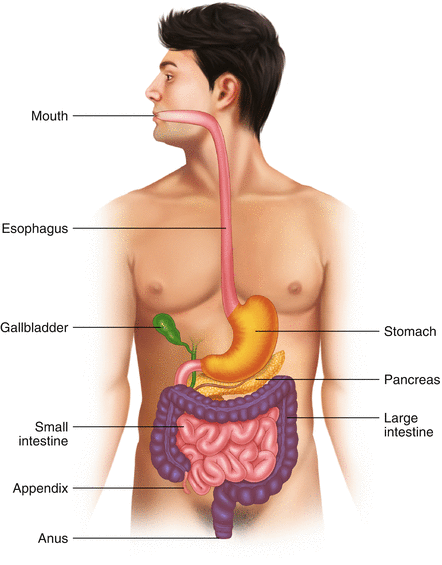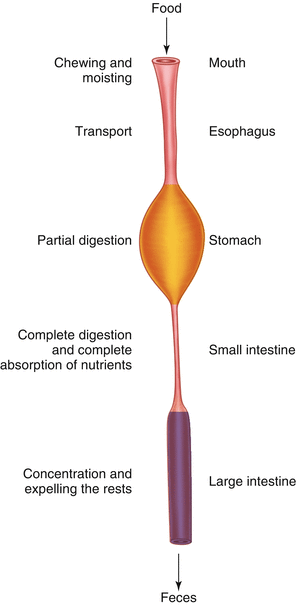, Jan Gunnar Hatlebakk1 and Trygve Hausken1
(1)
Clinical Medicine, University of Bergen, Bergen, Norway
Summary
The digestive tract is an important organ, whose function is to break down the food we eat into small nutrients that are absorbed and distributed to the other organs of the body.
The digestive tract consists of several segments: the mouth, esophagus, stomach, and the small and large bowels.
All of the bowel functions are controlled and regulated by a local system of endocrine cells and nerve cells that lie within its walls [i.e., the neuroendocrine system (NES)].
The NES operates independently from the central nervous system (the brain and spinal cord), but communicates and integrates with the brain and other parts of the nervous system.
The first component of the NES is the endocrine cells, which are scattered among the cells lining the bowel lumen. These cells react to the contents of the bowel lumen, and especially nutrients, by releasing their hormones into the bloodstream.
The bowel endocrine cells are abnormal in patients with IBS.
In order to understand the mechanisms underlying irritable bowel syndrome (IBS), it is necessary to have a basic knowledge of the digestive tract and its functions. The digestive tract is an important organ for the entire body. Its function is to break down the food we eat into small units of carbohydrates (monosaccharides), proteins (amino acids), fat (fatty acids), vitamins, and minerals, and to absorb these small units into the bloodstream, in which they are distributed to different organs of the body. The supply of these small units of carbohydrates, proteins, fat, vitamins, and minerals to the different organs of the body is necessary for those organs to function correctly. In other words, a well-functioning digestive tract is necessary for the wellbeing of the entire body.
The Gastrointestinal Tract and How It Functions
The gastrointestinal tract (Fig. 2.1) starts at the mouth, from which a long tube called the esophagus emerges. The esophagus leads to the stomach, which opens to the small bowel, which in turn continues to the large bowel. A common channel (duct) from the gallbladder and pancreas opens into the small bowel, delivering bile acid and pancreatic juice. The esophagus is about 20 cm long, the stomach is 30 cm long, the small bowel is about 6 m long, and the large bowel is about 1 m long, resulting in the gastrointestinal tract, being about 7.5 m long.


Figure 2.1
The digestive system starts at the mouth, which leads to a long tube, the esophagus. The esophagus enters a sack, the stomach, which in turn opens into a long coiled tube, the small intestine. Bile acids and pancreatic juice are emptied through a common duct into the start of the small intestine. The small intestine leads to a larger and shorter tube, the large intestine, which ends at the anus
Biting, chewing, and moistening of the food with saliva take place in the mouth. The saliva contains chemical substances (enzymes) that start breaking down large molecules of carbohydrates to small units. The food is then transported along the esophagus to the stomach, where it typically remains for 4–6 h, during which time the food is mixed with the gastric juice, which contains enzymes that break down carbohydrates, proteins, and fats. The partially digested food then enters the first part of the small bowel, where it is mixed with bile acid and pancreatic juice, which contains several enzymes that complete the breakdown of carbohydrates, proteins, and fats. The small units of carbohydrates (monosaccharides), proteins (amino acids), and fats (fatty acids), as well as vitamins and minerals are absorbed into the blood as they pass through the rest of the small bowel. The remains of the food enter the large bowel, where they are concentrated by the removal of water and minerals. Finally, the waste is expelled through the rectum as feces (Fig. 2.2).








